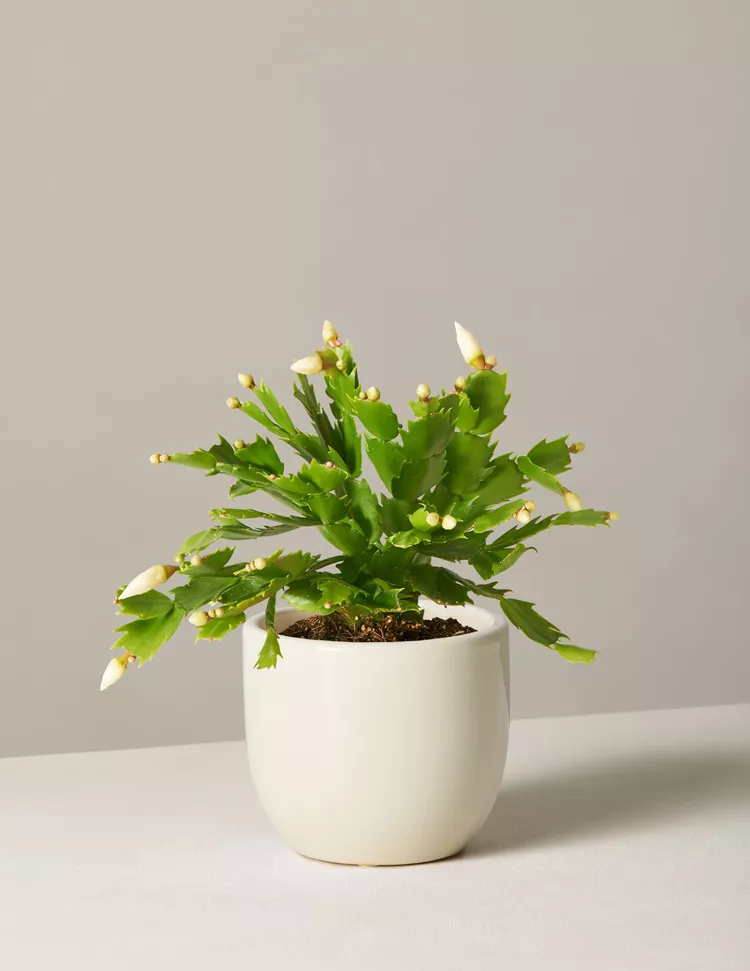The most wonderful time of the year can quickly turn into a nightmare if your dog or cat ingests a houseplant that's toxic to pets. "Symptoms from ingesting poisonous plants include vomiting, diarrhea, irritation of mouth and tongue, incoordination, difficulty swallowing, increased salivation, and difficulty breathing," says Lora LaBranche, DVM, the vice president of veterinary operations for Vet's Best Friend. "Depending on which plant and how much is ingested, death is possible." Unfortunately, several plants commonly used for decking the halls (like pine trees, amaryllis, holly, and mistletoe) could be harmful to your beloved pet.
The good news is that there are colorful, easy-to-care-for houseplants that are completely safe for your pet to be around—and they're perfect for the holidays and beyond. Should a furry friend come into contact with a toxic plant, act quickly to ensure your pet survives. "If your pet ingests a poisonous plant or exhibits symptoms, take them to the veterinarian immediately for treatment," LaBranche says. "It is advised that you avoid owning houseplants that are poisonous to pets, but if you do have them, keep them away from your pets and routinely check them to make sure the leaves aren't being chewed."
To keep your pets happy and healthy (and to help you have a stress-free holiday season), shop these holiday houseplants that are all pet-friendly.
Holiday Cactus
Whether you choose a Christmas cactus or Thanksgiving cactus, these plants won't harm your pets. Both types of holiday cactus produce beautiful flowers in pink, red, yellow, or white. Not only can the holiday cactus live for decades, but it's also a fuss-free plant to grow. Unlike other varieties of cactus, these houseplants don't have sharp spines and they prefer indirect light. Water your plant regularly, and keep the soil moist while it's flowering. Your cactus will slowly grow anywhere from 6-12 inches tall and 1-2 feet wide.
Moth Orchid
A moth orchid (Phalaenopsis) is a beautiful choice for anyone who loves the look of fresh-cut flowers but wants something longer-lasting. (It also happens to be The Sill's best-selling blooming plant.) Keep your orchid in a spot where it'll receive medium to bright indirect light. Moth orchids only need water every 10-14 days when the bark or moss in the pot feels dry. Your orchid, which will grow about 6-12 inches tall, will bloom once a year for about three months. Once all the blooms have dropped off, trim off the flower spike just above the second node (small bump) up from the base of the plant. Your orchid will rebloom with proper care the following year.
Pinstripe Calathea
The lush foliage of the pinstripe calathea (Calathea ornata) features green leaves with streaks of bright pink lines (hence the plant's name). The easy-to-care-for houseplant prefers medium to bright indirect light and needs water every one to two weeks. With correct care, the houseplant can grow 3 feet tall.
Silver Vase Bromeliad
Brighten up your space and holiday displays with this gorgeous bromeliad (Aechmea fasciata) that can bloom for up to 6 months out of the year. The low-maintenance houseplant likes partial to bright indirect light. Also known as urn plant, this bromeliad has an interesting feature when it comes to watering. You add water to the center of the plant (the urn formed by the leaves), as opposed to the soil. Make sure the middle of the plant has water in it at all times, and every few weeks, empty out the liquid and add fresh water. This pretty blooming tropical plant can grow up to 18 inches tall.
Pink Polka Dot Plant
The pink polka dot plant (Hypoestes phyllostachya) is another colorful holiday houseplant option. Give this little plant bright indirect light and moist soil and it can grow around 1-2 feet tall and 1 foot wide. Polka dot plant does best with high humidity so try it in a terrarium or brightly-lit bathroom.
Large Majesty Palm
A tall majesty palm (Ravenea rivularis) can stand in for a Christmas tree if your pets won't leave the real deal alone. The indoor tree likes bright indirect light and needs water every one to two weeks or when the soil is dry to the touch. This palm can grow up to 10 feet tall and the fronds are strong enough to hold lightweight ornaments. (Note that majesty palms are slow-growing, so it will take the tree several years to get to its mature height.)




















